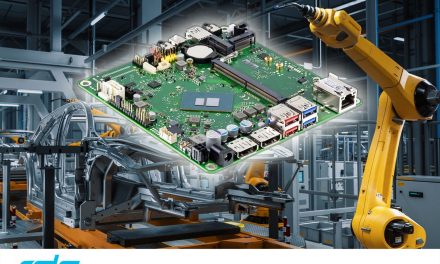 Harry Filer, Managing Director of Messagemaker Displays, takes a look at how key drivers such as improved performance and reduced cost are renewing interest in LED technology, pushing adoption forward
Harry Filer, Managing Director of Messagemaker Displays, takes a look at how key drivers such as improved performance and reduced cost are renewing interest in LED technology, pushing adoption forward
Those of us who were around when LED technology first emerged remember it as a single colour red (or green) display. Even as more colour options were introduced and the clarity and brilliance of LED displays was recognised, the cost of the technology was sometimes considered prohibitive and feasible only where larger display solutions were required.
Over the last ten years, an increase in the volume of manufacture, allied to new technology developments, has driven down the price of systems dramatically. Today’s LED displays offer full colour option for less than the price of a single colour display five to ten years ago, with many other advantages besides. The long life of LED displays (up to 11 years in continuous use) also makes the technology a cost effective proposition compared to LCD and TFT when evaluated on a whole life basis.
Beyond cost reductions, which now make LEDs a viable proposition, the increasingly widespread use of LED displays is being driven by the inherent flexibility the technology offers.
LED displays can now be custom-built in many different sizes or shapes allowing designers to tailor display configurations to suit their equipment designs or to meet specific customer requirements. At larger display sizes, LED display technology provides plenty of scope for designers where aesthetics are important or where a high impact result is sought, with the potential to achieve uninterrupted displays across both corners and curves and to create unusual shapes.
Adding to the advantages offered by the modular nature of LED display structures, the combination of state of the art materials and technology means that modern displays are substantially lighter and more compact – with weight reductions up to 80% now being realised. An example of the new breed of display is Messagemaker’s Imposa Plus system, where cooling has been achieved without the need for fans, which can add bulk.
These new light-weight, slimline systems allow large screen formats to be used for applications where load was previously an issue, for example wall-mounted displays for interiors.
Underpinning the advances in cabinet design and surface mounting technology is the development of intelligent software that is able to interpret changes in screen configuration, and automatically refresh images and text so that they are always correctly displayed.
This inherent versatility enables very large screen formats and even multiple curvature displays incorporating convex and concave screens to be assembled and installed quickly and easily, offering a solution where the fixed size options offered by TFT and plasma screens would otherwise impose design restrictions.
Visually stimulating displays
Equally important is the clarity and brilliance offered by the displays themselves. LEDs emit pure light, up to twenty times brighter than other screen technologies. LED displays are particularly useful where glare from lighting or sunlight may pose problems with screen readability. Once a stumbling block to the use of LED displays, the availability of full colour (with the capability to render displays in up to 4.4 trillion colours) at an affordable price has helped to encourage adoption of the technology.
The use of LED technology in terms of applications, location or size are virtually unlimited, although typically LED displays would not be used for displays with a character size of one inch or less, where other solutions such as TFT, LCD may be more practical.
At close viewing range up to 5 metres where the focus is on individuals, TFT, LCD and Plasma screens are still a common choice. Even here, the relatively short life of such systems, with screen burn-out sometimes an issue, means that LED systems are now being considered as a viable alternative. With no moving parts and a robust construction that can withstand harsh environments, the virtually maintenance free nature of LED systems is attractive to systems integrators looking to minimise ongoing support requirements.
Where LED really wins out, is in communicating with larger audiences or where long distance visibility is a requirement – the technology offers a crisp clear display that is visible at distances up to half a mile away.
The high visual impact of LED displays makes them particularly effective for use where information of a critical nature needs to be communicated, for example for the display of safety information or alerts.
A key advantage of LED display solutions is the ease of interface, both in installation and in use.
Modern LED systems typically use the industry-standard ASCII protocol, fed by data either supplied as a string or using the development tools provided. Display data can be uploaded either in the form of screen captures or be database-driven.
Getting the message out
Historically, programming LED systems, required a dedicated computer. Today, messages can be programmed using a laptop. Connectivity options range from a simple RS232 interface to wireless, 3G data communications.
Cost is set to be the main driver for the take-up of LED displays, with global manufacturing and supply continuing to drive down prices.
Continuing advances in technology have already delivered significant benefits in performance to designers and users. The main area where further developments are likely is display resolution. Currently display formats from 4 mm up to 40 mm are available. In the near future we could see pixel spacings as low as 2.5 mm on offer.
With the supply of LEDs assured at a reasonable cost and driven by innovative product designs from manufacturers, the viability of LED as an option is set to increase, opening up more and more applications. The future is bright!


